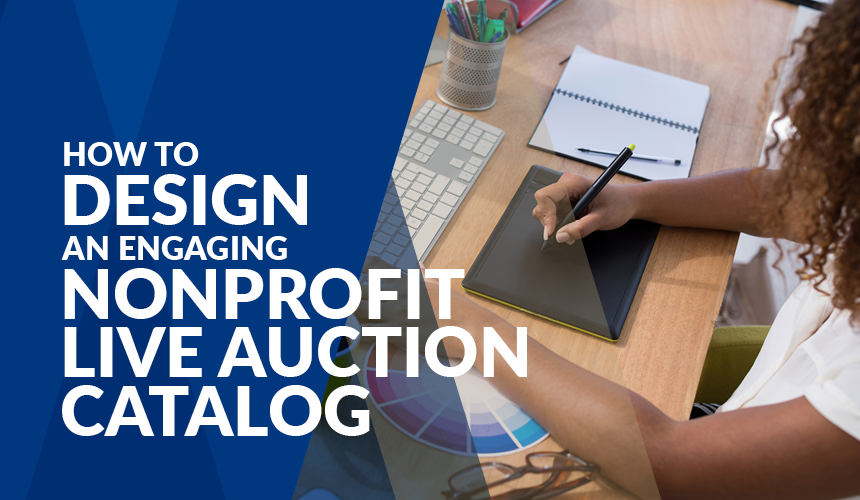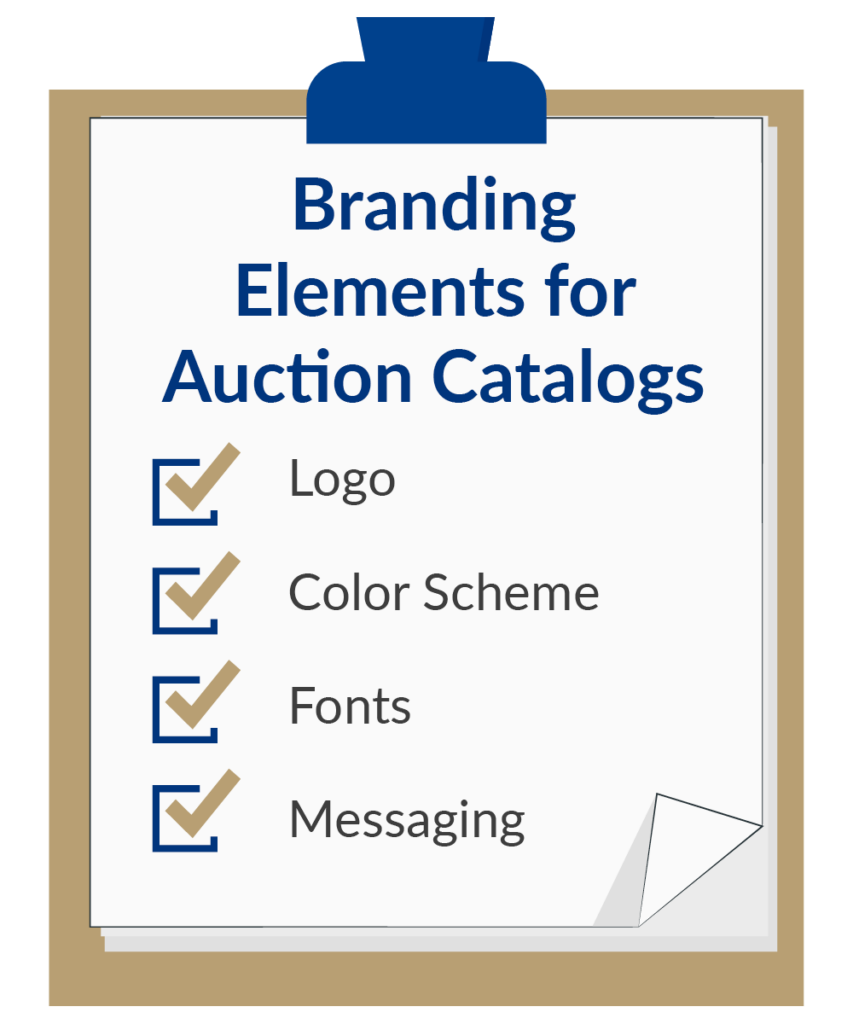
Live auctions can become signature, annual events for nonprofits. Their competitive nature makes them exciting for participants, and you can tailor the atmosphere and items to your target audience.
One essential resource you’ll need to create before your event is an auction catalog. This catalog will guide participants through every aspect of the auction, from presenting the event schedule to helping them decide which items to bid on. Plus, if you release your auction catalog in advance, it’s an effective event marketing tool.
In this guide, we’ll share our top tips for creating an auction catalog that engages participants and elevates your event with both its content and its format. Let’s dive in!
Live Auction Catalog Content Tips
Prominently Feature Your Nonprofit’s Mission
Generally speaking, there are two main groups of people who attend nonprofit auctions. The first group includes supporters who already care deeply about your organization’s mission, and the chance to take home a prize is an added bonus. The second group’s priority is finding unique, high-quality items to bid on, but they’re happy to support a good cause in the process.
It’s important to make the cause your event is supporting clear for both groups, and your auction catalog is a great way to do just that. Here are some ways to incorporate your nonprofit’s message for fundraising into your catalog:
- Write your tagline or a condensed version of your mission statement on the cover.
- Include a letter from your executive director or board chair that goes into more detail about your values and impact.
- Create an “About Us” page in the catalog that gives examples of how you’ll use the auction funding to further your mission.
For individuals whose main focus is supporting your cause, these concrete details can encourage them to contribute more during the event. Additionally, participants who are there for the items can learn more about your organization and consider getting involved in other ways.
Write Clear Item Descriptions
Live auction bidding is fast-paced and can quickly become intense. It’s helpful for participants to have an idea of which prizes they most want to bid on before the auction begins. This is where the item description section of your catalog comes in.
When writing your item descriptions, make sure to:
- Be concise. Supporters should be able to skim through the whole catalog before the event begins, so keep your sentences short and use bullet points when possible.
- List everything the winner will receive. Many auction items come as a bundle—for example, a concert experience might include two front-row seats, merchandise, and a photo opportunity with the artist. Participants need to know these details to get a better idea of the item’s value and bid accordingly.
- Include any limitations on the item’s use. If a gift certificate expires or a vacation can only be taken on certain dates, make supporters aware to ensure the winning bidder will be able to use their prize.
Winspire’s guide to creating an auction catalog recommends listing two to three items on each page, for a total of 12 to 15 items. This makes your catalog easy to follow and a reasonable length—plus, including 15 or fewer items in a live auction ensures the event doesn’t run too long.
Acknowledge Your Event Sponsors
Securing corporate sponsorships is essential to the success of your nonprofit’s live auction. Whether they provide financial support or donate auction items, sponsors can greatly offset your event’s upfront costs, which allows you to put more of your fundraising revenue toward your mission.
For each item in your auction catalog that a corporate sponsor contributed, put a blurb under the description that says something like, “This item was provided by [business name].” At the end of the catalog, include an “Acknowledgments” page that lists all of your financial sponsors. When combined with other methods of showing gratitude, these recognitions can help your nonprofit build long-term, mutually beneficial relationships with its corporate sponsors.
Live Auction Catalog Formatting Tips
Incorporate Your Organization’s Branding
The purpose of your nonprofit’s brand is to make your organization recognizable and memorable for supporters. The more they see your branding in your communications, the more likely they will be to recognize, remember, and engage with your nonprofit. Your auction catalog is no exception.
According to NXUnite, you should include the following branding elements in your auction catalog:

- Logo: As the symbol that represents who your nonprofit is, your logo should feature prominently on the cover of the catalog.
- Color scheme: Use two or three main colors that match the colors of your logo throughout the catalog.
- Fonts: Ensure the typefaces you use for both header text and copy are consistent and legible.
- Messaging: Branding extends beyond visuals to writing style, so your tone and word choice should align with your organization’s values.
Branding also makes your catalog look more professional. If you use a premade design template, make sure you can customize it for your nonprofit.
Include Compelling Images
Rounding out your auction catalog with a variety of high-quality photos also makes it look professional and aesthetically pleasing. Consider using your cover photo to reinforce your nonprofit’s mission. For instance, an animal shelter might use a picture of kittens up for adoption, or an environmental nonprofit could include a photo of volunteers cleaning up a beach. Just make sure to get subjects’ consent to use a picture that includes people.
Additionally, including a relevant image next to each of your live auction items can help persuade participants to bid on them. While it’s easy to take a picture of any physical items you’re auctioning off, experiences can be trickier. However, one good strategy is to include a photo that represents the benefit of winning the experience, such as a picture of the beautiful vacation destination the winning bidder will get to visit or the delicious food they’ll enjoy if they win a restaurant gift certificate.
Create Print and Digital Versions of Your Catalog
Once you’ve finalized the content and layout of your auction catalog, print hard copies of it and save it as a PDF for download purposes. There are two main reasons to do this. First, some supporters will prefer to flip through a physical book during the event, while others would rather pull up the catalog on their phones, so having both versions available will accommodate all participants.
Second, as mentioned previously, auction catalogs are an excellent marketing tool since they get supporters excited about bidding on your prizes before they arrive at the event. If you have both print and digital versions of your catalog, you can send out hard copies with direct mail invitations and use the PDF to promote your event via email, social media, and your nonprofit’s website.
The Bottom Line
By following the tips above, you’ll be well on your way to creating a live auction catalog that is worthy of being a signature nonprofit event. After the auction, it’ll serve as a reminder of the experience for participants that can inspire them to come back next year and engage with your organization in other ways in between.
About the Author

Jeff has over 17 years of experience in the Nonprofit and fundraising industry. Prior to Winspire, Jeff worked for 5 years as the Director of Development at Cal State Fullerton before co-founding a company specializing in producing charity auctions for nonprofits where he successfully produced the auctions for 250 of Southern California’s most successful fundraising events.
In 2008 Jeff founded Winspre with the goal of helping non-profits across the country increase their event fundraising revenue and identify new fundraising sources. Jeff and his team at Winspire have helped over 12,000 non-profits to date.


